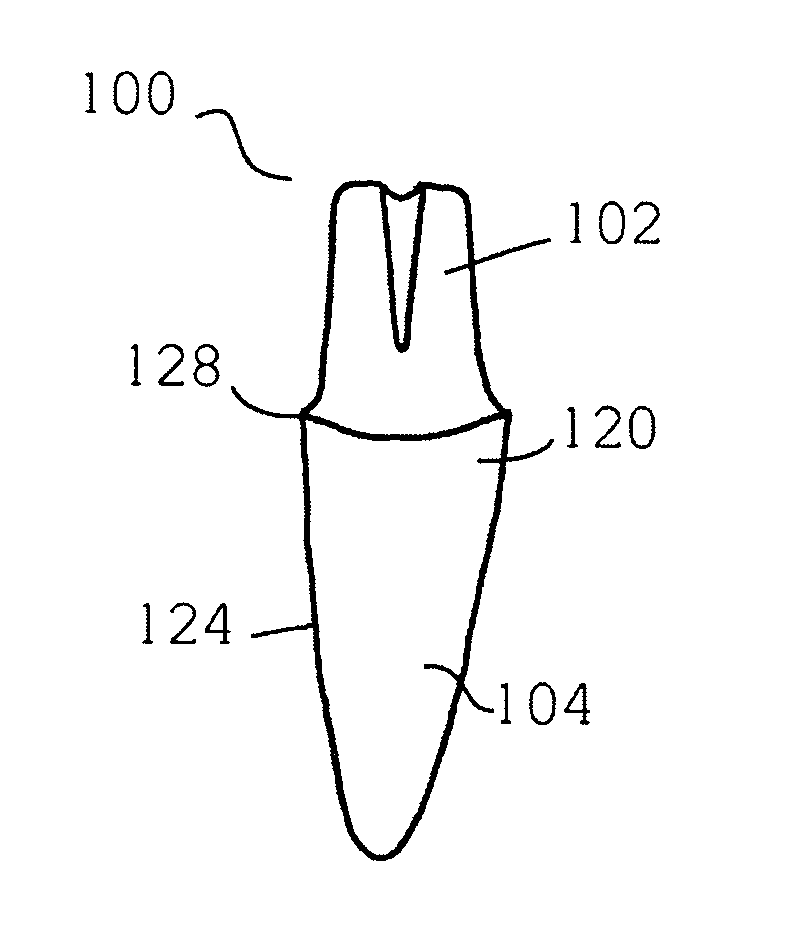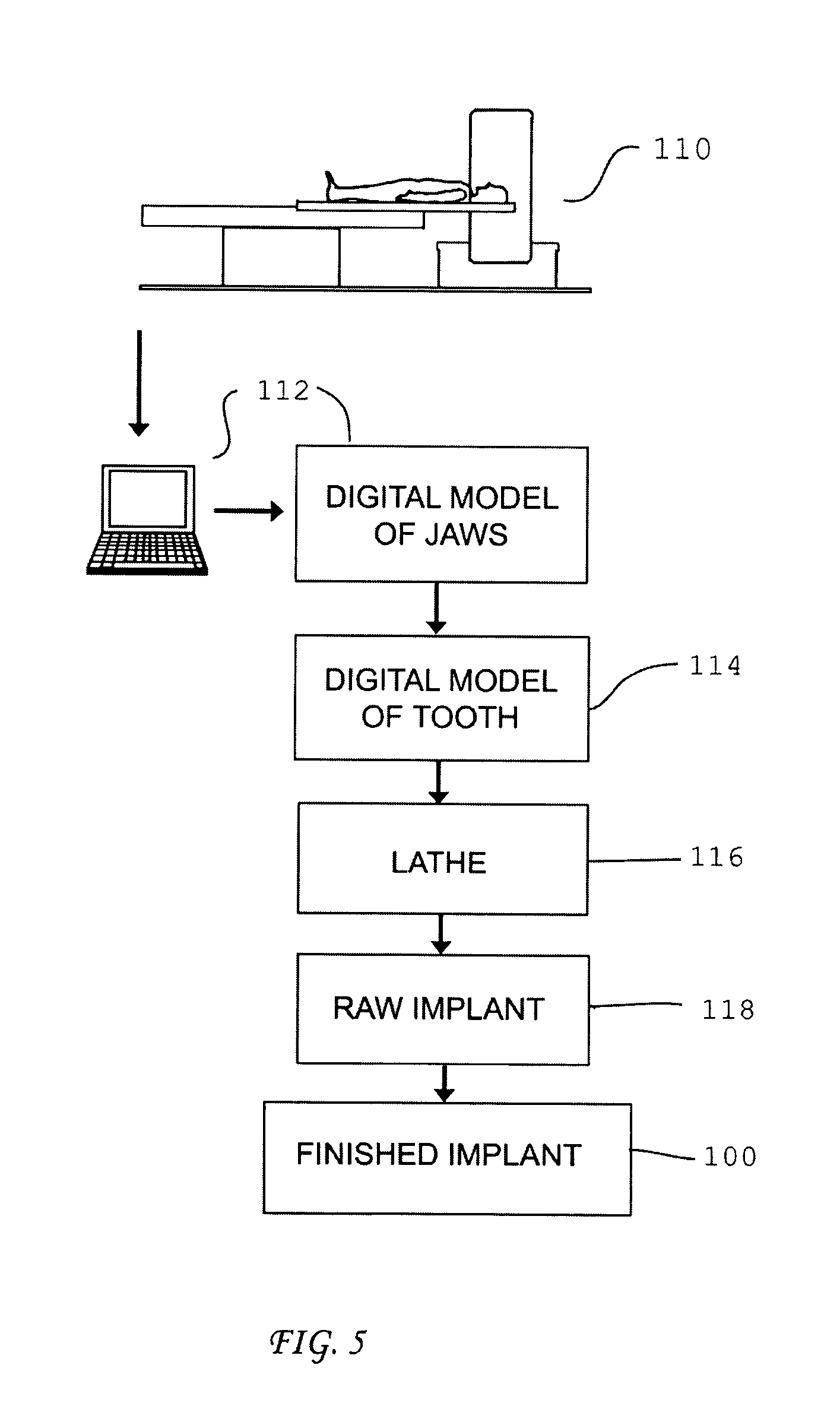Dental implants and methods for their fabrication and use
a technology for dental implants and implants, applied in the field of restoration dentistry, can solve the problems of traumatic implant installation into the bone of the jaw, difficult to restore the implant in the proper anatomic location, nerve damage and sinus perforation, etc., and achieve the effect of enhancing post-implant bone or ligament growth
- Summary
- Abstract
- Description
- Claims
- Application Information
AI Technical Summary
Benefits of technology
Problems solved by technology
Method used
Image
Examples
Embodiment Construction
[0026] Referring more particularly to the drawings, an implant 100 for use in replacing a nonfunctional tooth is illustrated in FIG. 1. A nonfunctional tooth T is illustrated in FIG. 2 and has a root R with an anatomical topography. With additional reference to FIG. 3, a tooth T also has a neck N, and a crown C. For the purposes of this description, a subgingival portion S of a tooth T is defined as the portion of the tooth that extends below a surface of the gums, or gingival G. The subgingival portion S includes the root R and generally includes at least a portion of the neck N. The term “topography” is defined herein as a description of the surface morphology of an anatomical part, such as the root R, the neck N, and the subgingival portion S of a tooth T.
[0027] According to the invention, the implant 100 includes an abutment 102 and a base 104. As know in the art, the abutment 102 of an implant is designed to receive an artificial crown 106, as shown in FIG. 4. As shown in FIGS...
PUM
 Login to View More
Login to View More Abstract
Description
Claims
Application Information
 Login to View More
Login to View More - R&D
- Intellectual Property
- Life Sciences
- Materials
- Tech Scout
- Unparalleled Data Quality
- Higher Quality Content
- 60% Fewer Hallucinations
Browse by: Latest US Patents, China's latest patents, Technical Efficacy Thesaurus, Application Domain, Technology Topic, Popular Technical Reports.
© 2025 PatSnap. All rights reserved.Legal|Privacy policy|Modern Slavery Act Transparency Statement|Sitemap|About US| Contact US: help@patsnap.com



